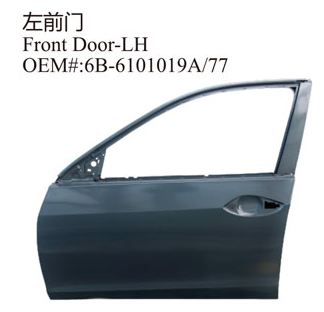In the process of vehicle use, the sheet metal parts of automobile body will be damaged. Common are: wear, corrosion, fracture, concave convex or tearing of metal plate surface, fold, bending and distortion, etc.
The damages in the process of vehicle operation include: wear, corrosion, cracks, etc.; the mechanical damages include: bump, tear, fold, bending and distortion caused by accidents; sometimes due to design reasons, such as insufficient structural strength and unreasonable process design, sheet metal parts will be damaged. When the sheet metal parts are damaged, there is often more than one kind of damage. Therefore, in the repair, we should observe and analyze, and adopt different repair methods and sequences according to different damage conditions.

Automobile sheet metal parts are mostly produced in batch, and the forming process is basically completed on mechanical equipment. Manual operation is mostly auxiliary processing, but single piece processing or repair is mainly manual operation. The common manual processes of sheet metal production include bending, edge closing, edge setting, edge pulling, arch curling, undercutting and correction. At the same time, welding, riveting and other methods are used to realize the permanent connection between the sheet metal parts.
The repair of the common damage of automobile sheet metal parts is mostly concentrated in the body part, and there are many common damage forms. When repairing, we should take corresponding repair methods according to the damage form and degree. 1、 Impact bump damage (1) the impact bump of sheet metal parts can be repaired by hammering or jacking. For the shaping of the concave convex or damaged part of the small part, the pad iron can be padded on the bottom surface of the bottom of the depression, and the hand hammer can knock on the convex part. During the operation, the hammer will gradually knock along the protruding part and change the position of the iron pad accordingly. When the protruding part is flattened, the concave sound is mostly restored.
Copyright By © Jiangsu Halreal Vehicle Industry Co., Ltd. Powered by Yicheng Network